Driving without proper insurance in Texas isn’t just a risky move—it’s illegal. Whether you’re a seasoned driver or recently moved to the Lone Star State, understanding Texas’s minimum insurance requirements is crucial for your protection and the protection of others on the road.
But what exactly does the state mandate? How do these requirements benefit you, and what happens if you don’t comply? This post will cover everything you need to know, from the specific coverage types Texas demands to tips for choosing the right insurance policy.
Understanding Texas Minimum Insurance Requirements
What Are Minimum Insurance Requirements?
Minimum insurance requirements are the least amount of coverage that Texas law requires you to carry as a driver. These are meant to ensure that if you’re involved in an accident, funds are available to cover basic damages and injuries.
Texan drivers must comply with these insurance mandates to stay on the right side of the law. Failure to meet these requirements can lead to serious penalties, financial strain, and complications during an accident claim.
Breakdown of Texas’s Required Insurance Coverage
The state of Texas operates under an “at-fault” system for car accidents, meaning the driver who is found at fault is responsible for covering damages. This is why liability insurance is the key focus in the state’s minimum requirements.
Currently, Texas requires drivers to carry 30/60/25 liability insurance coverage, which includes the following components:
- $30,000 for bodily injury per person involved in an accident
- $60,000 total for bodily injury per accident, regardless of the number of people injured
- $25,000 for property damage resulting from the accident
Liability insurance is designed to protect others when you are at fault in a crash, but it doesn’t cover your own injuries or vehicle damage.
Additionally, Texas law mandates that insurance companies offer personal injury protection (PIP) as part of their policies, though individuals have the option to decline it in writing.
How Minimum Insurance Protects You and Others
Bodily Injury Liability
Imagine you are found at fault for an accident that results in injuries to another driver or passengers. Bodily injury liability can help cover medical expenses, such as hospital bills, physical therapy, or even long-term rehabilitation for the affected parties. Without this coverage, you’d have to pay these costs out of pocket—a potentially devastating financial burden.
Property Damage Liability
Ever accidentally rear-end someone in traffic? The damage to their car could quickly add up to several thousand dollars. Property damage liability helps cover the repair or replacement costs for the other driver’s vehicle, as well as any damage caused to other property—such as fences, mailboxes, or street signs.
Personal Injury Protection (PIP)
While optional, PIP can be a lifesaver. If you’re involved in an accident, PIP goes beyond basic medical expenses by covering lost wages, funeral expenses, and non-medical costs like childcare while you recover. It provides a safety net, even if you’re at fault or the fault can’t immediately be determined.
Consequences of Non-Compliance
Driving without the required insurance in Texas can have serious repercussions. Here’s what you risk:
- Fines and Fees
First offenses can result in fines of up to $350, while subsequent violations carry fines as high as $1,000. Plus, you’ll face additional charges for reinstating your driver’s license or vehicle registration.
- License Suspensions
Get caught without insurance? Your driver’s license could be suspended until you provide proof of coverage.
- Vehicle Impoundment
Your car could be impounded, leaving you to deal with towing and storage fees, along with the hassle of recovering your vehicle.
- SR-22 Requirement
If you’re caught driving uninsured, you may be required to file an SR-22—a certificate of financial responsibility—through your insurance company, which often leads to higher premiums.
- Lawsuits and Financial Liabilities
Without insurance, you’re personally responsible for covering damages and injuries if you’re at fault in an accident. This could result in lawsuits or even wage garnishment to pay off legal judgments.
Tips for Choosing the Right Coverage
While meeting the minimum insurance requirements keeps you legally compliant, it’s rarely enough for full protection. Here are some tips to help you choose coverage that better fits your needs:
- Evaluate Your Assets
Do you own a home or have significant savings? You might want to consider increasing your liability limits to protect your personal assets in the event of a major accident.
- Consider Optional Coverages
Looking for additional protection? Optional coverages like collision, comprehensive, uninsured/underinsured motorist (UM/UIM), and medical payments (MedPay) can safeguard you from out-of-pocket costs.
- Shop Around
Gather quotes from multiple insurance providers to find the best combination of coverage and affordability. Use online comparison tools or consult with an agent for tailored recommendations.
- Understand Policy Fine Print
Read the fine print on exclusions and deductibles. Know what your policy covers—and what it doesn’t—so there are no surprises should you need to file a claim.
Additional Considerations for Texas Drivers
Optional Coverages Worth Exploring
While liability insurance is required, there are several additional coverages that can enhance your peace of mind:
- Collision Coverage: Helps pay for damages to your car caused by an accident, even if you’re at fault.
- Comprehensive Coverage: Protects your vehicle against non-collision incidents such as theft, vandalism, or weather damage.
- Uninsured/Underinsured Motorist Coverage: Covers your expenses if you’re hit by a driver who lacks adequate insurance.
- Roadside Assistance: Provides support for flat tires, towing, or other emergency services.
When To Update Your Policy
Life changes—so should your insurance. Events like purchasing a new car, moving, or adding a teen driver to your household may require policy updates to ensure adequate coverage.
Remember, staying proactive about your policy ensures you’re not left underinsured when you need it most.
Stay Protected on the Road
Understanding and meeting Texas’s minimum insurance requirements isn’t just about avoiding penalties—it’s about safeguarding yourself, your passengers, and others on the road. While the state’s mandated limits provide a foundation, consider going beyond the minimum to secure complete coverage and protect your financial future.
Take a moment to review your current policy. Are you confident it offers enough protection? Reach out to your insurance provider to discuss your options or request a policy review. Have experience navigating Texas insurance requirements? Share your tips and questions in the comments below—we’d love to hear from you!




























